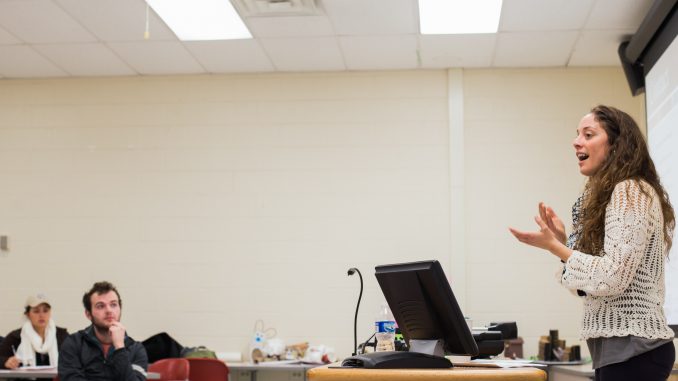
After spending a year in Guatemala, Fulbright scholar Valeri Harteg came back to America with a new perspective on her career and a Guatemalan rescue dog named Molly.
Harteg arrived in Quetzaltenango, Guatemala in January 2012, where she spent a year teaching English to a wide range of native peoples through the English Teaching Assistant grant, which was awarded to her through the Fulbright Program.
Dana Dawson, the director of Scholarship Development and Fellowship Advising, helps students find available scholarships. To promote the Fulbright U.S. Students Program for Temple students, Dawson hosted “Fulbright Week” from March 23-26.
Undergraduate juniors and seniors, as well as recently graduated students in any discipline, are eligible to win a Fulbright scholarship. There is also no minimum GPA requirement to apply, according to the application.
During a few of the Fulbright Week sessions, Harteg shared with listeners her experience as a Fulbright scholar. Harteg is currently a graduate student at Temple.
While in Guatemala, Harteg changed her career path from psychology to education. She now studies teaching English to speakers of other languages at Temple as a result of her experience through the program.
Fulbright, a national scholarship program, was initiated by Senator J. William Fulbright in 1945. President Truman signed a bill regarding the Fulbright scholarship into law in 1946.
The scholarship program, which today is administered by the federal Department of State, works to facilitate the “promotion of international goodwill through the exchange of students in the fields of education, culture and science,” according to Fulbright’s website. The scholarship program works to send American students abroad, and the program operates in 155 nations.
“Fulbright was introduced with the intention of getting more Americans abroad,” Dawson said.
Harteg said Fulbright provides an opportunity to encourage international interaction among individuals across the globe.
“The chief goal of Fulbright is to facilitate international exchange,” Harteg said.
While in Guatemala, Harteg said she volunteered at a shelter for street dogs. There, she was able to improve her Spanish-speaking capabilities and left the country with a dog of her own. A mixed-breed dog, who she named Molly, flew in the cargo belly of the plane from Guatemala to America.
The Fulbright program provides scholarship funds for students to travel abroad and to conduct research projects or to teach English as a second language through the English Teaching Assistantship, and these are the two Fulbright programs Dawson deems to be most applicable to the widest range of Temple students.
“Often, students hear about the Fulbright, and they envision it to be a really elite program that only students from fancy colleges win, and that is really not the case,” Dawson said. “The Fulbright U.S. Students Program is just something that so many students could apply for, but that I think has so far been under-applied for by Temple students and alumni.”
Dawson said it’s important for students to attempt to connect with the application committee in the essay portion of the scholarship application. Upon applying, students are required to select the country in which they would like to research and teach.
Dawson said students are most successful in gaining the scholarship when applicants can communicate a strong case regarding their desire to research/teach within a specific nation.
Dawson said Temple students win Fulbright scholarships “pretty regularly.” There have been 81 Fulbright winners from Temple.
Finnian Saylor can be reached at finnian.saylor@temple.edu.


Be the first to comment